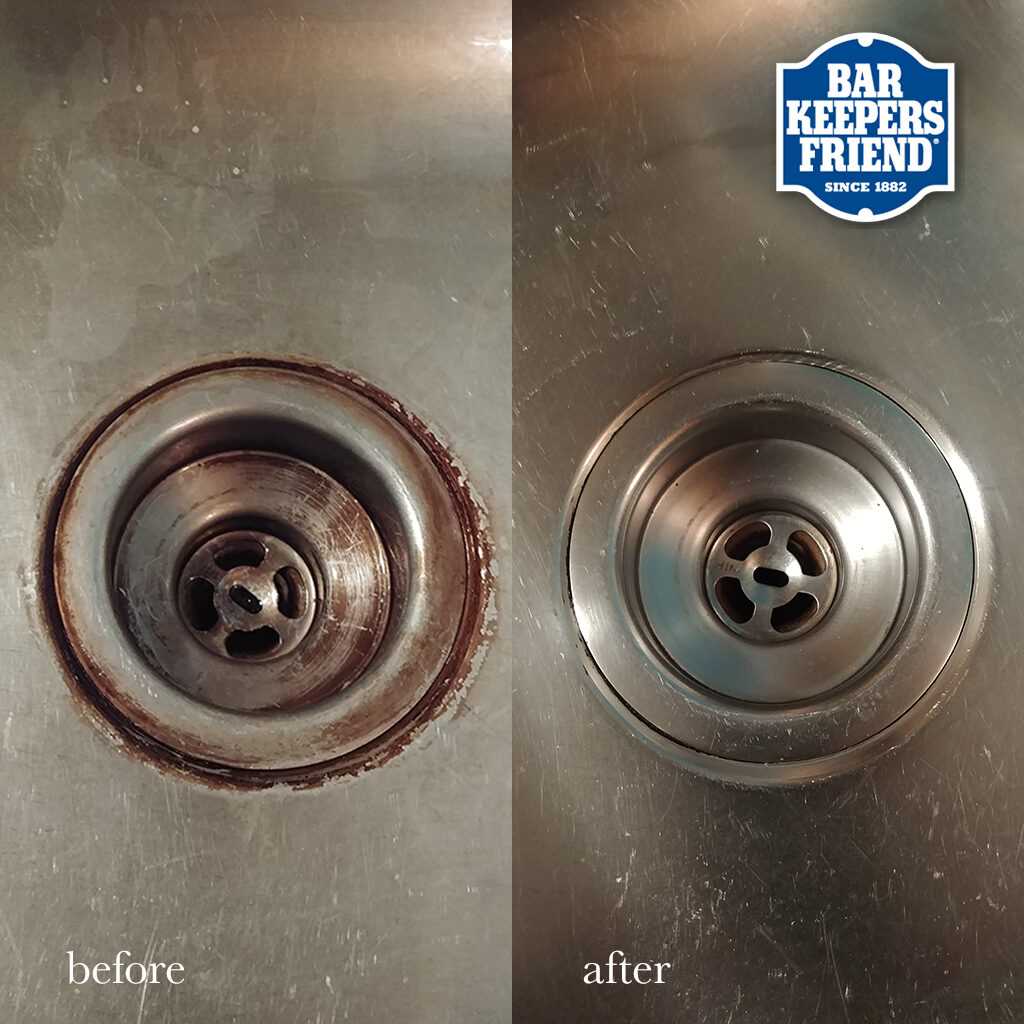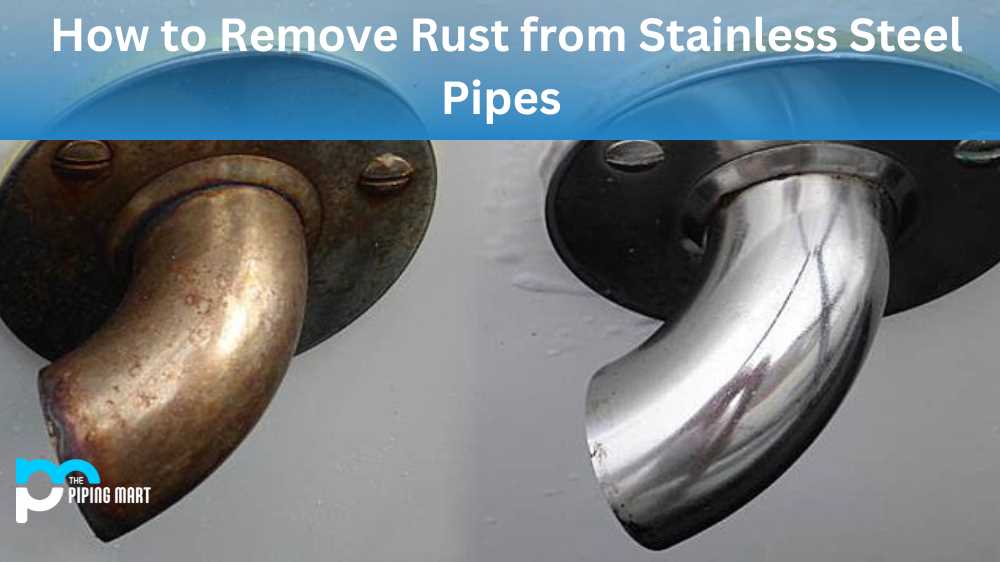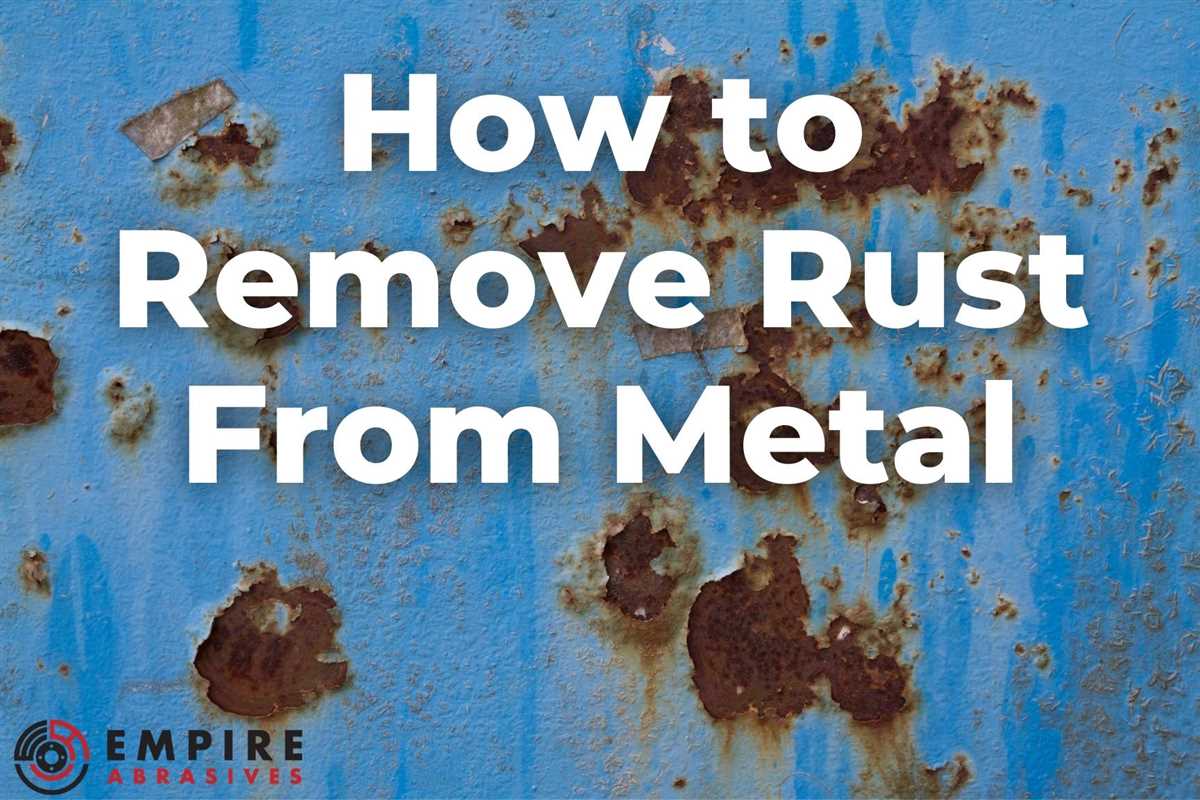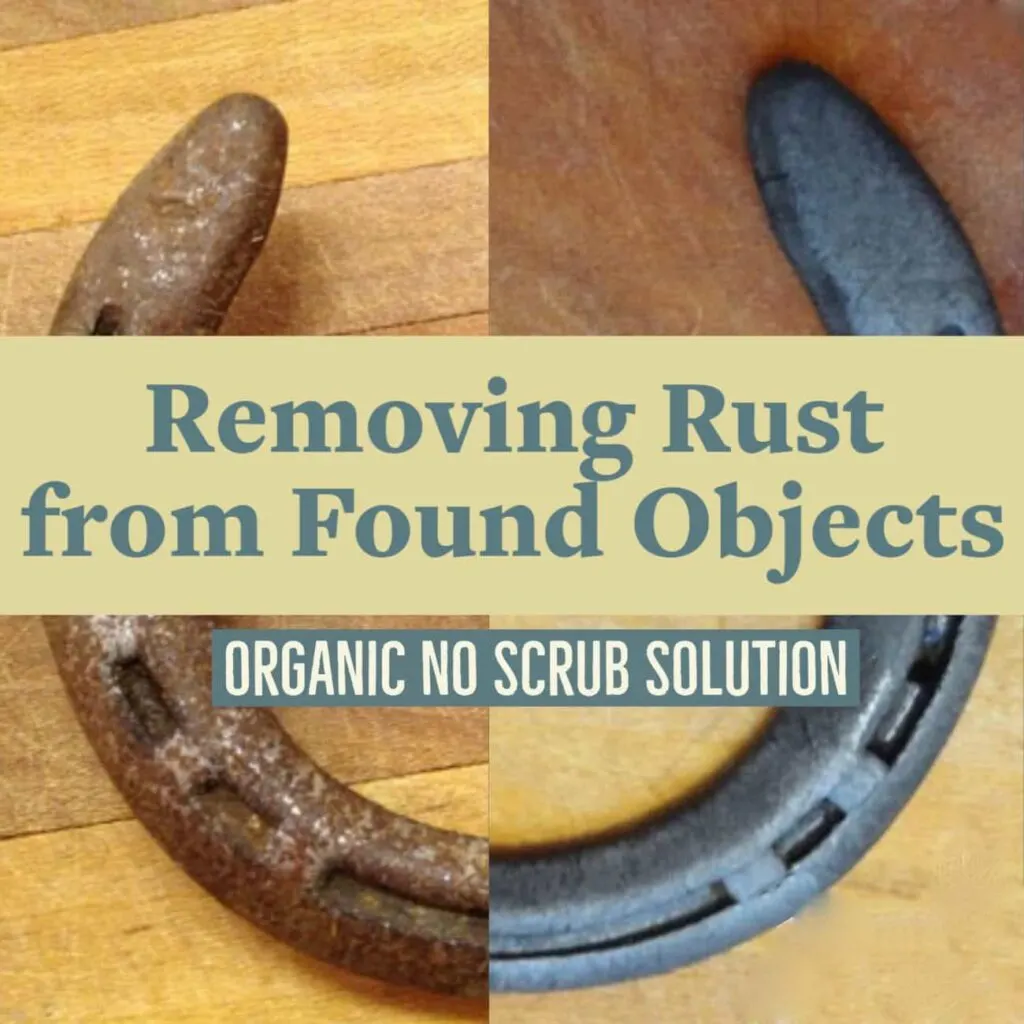




Steel is a durable and versatile material that is used in various industries, from construction to manufacturing. However, one of its biggest drawbacks is its susceptibility to rust. Rust is a common problem that occurs when steel is exposed to moisture and oxygen over time. It not only affects the appearance of the steel but also weakens its structure, making it less durable.
Fortunately, there are several effective methods for removing rust from steel. In this comprehensive guide, we will explore these methods in detail, providing you with the knowledge and techniques to successfully restore the appearance and integrity of your steel surfaces. Whether you are dealing with small rust spots or extensive rusting, this guide has got you covered.
First, we will discuss the essential tools and materials you will need for rust removal, including safety equipment such as gloves and goggles. We will then delve into the different types of rust removal methods, including mechanical, chemical, and electrochemical techniques. Each method will be explained in detail, highlighting its strengths, limitations, and appropriate applications.
In addition to discussing the specific methods, we will also provide you with valuable tips and tricks to ensure successful rust removal. This includes information on surface preparation, proper application techniques, and post-treatment care. By following these guidelines, you can achieve optimal results and effectively prevent future rusting.
Note: Before attempting any rust removal method, carefully assess the condition of the steel and its underlying surface. For extensive rusting or structural damage, it may be necessary to consult a professional for repair or replacement.
Understanding Rust on Steel

Rust is a common problem that affects steel. It is a result of the oxidation process that occurs when steel is exposed to moisture and air. Understanding the formation and nature of rust can help in effectively removing and preventing it from further damaging the steel.
How does rust form?
Rust forms when iron molecules in steel react with oxygen in the presence of moisture, creating iron oxide. This reaction is commonly known as oxidation. Over time, the iron oxide layer grows and weakens the steel, eventually leading to corrosion and structural damage.
Why does rust occur on steel?
Steel is primarily made of iron, and iron is highly prone to rusting. When steel is exposed to moisture, whether from rain, humidity, or any other source, the moisture comes into contact with the iron molecules in the steel. This triggers the rusting process.
Factors that accelerate rusting
- Moisture: Moisture is a crucial factor in rust formation. High humidity levels, proximity to water bodies, and exposure to rain or snow can all contribute to increased moisture levels on steel surfaces.
- Air: The presence of oxygen in the air is necessary for rust formation. The more oxygen present, the faster rusting occurs.
- Salt: Salt, specifically sodium chloride, accelerates rusting. This is why steel structures near coastal areas or exposed to saltwater are more susceptible to rust.
- Temperature: Higher temperatures can speed up the formation of rust as they increase the rate of chemical reactions.
The effects of rust on steel
Rust not only deteriorates the appearance of steel but also compromises its structural integrity. As rust continues to corrode the steel, it weakens it, making the material susceptible to fractures and failures. Rust can also spread to adjacent areas, causing further damage.
Preventing rust on steel
Preventing rust on steel involves implementing various measures to inhibit contact between steel and moisture. This can be achieved through methods such as:
- Applying protective coatings like paint or galvanization
- Regular cleaning and drying of steel surfaces
- Controlling humidity levels in storage or working environments
- Using corrosion-resistant alloys or stainless steel
Conclusion
Rust is a natural process that occurs on steel when exposed to moisture and air. Understanding the factors that contribute to rust formation can help in developing effective strategies for rust removal and prevention. By implementing preventive measures, it is possible to prolong the lifespan and maintain the integrity of steel structures and products.
Chemical Methods for Rust Removal

Chemical methods are commonly used for rust removal as they are highly effective in breaking down the rust and restoring the steel surface to its original condition. Here are some common chemical methods for rust removal:
1. Vinegar
Vinegar, especially white distilled vinegar, is a popular and environmentally friendly option for rust removal. Simply soak the rusted object in vinegar for a few hours or overnight. Then, use a scrub brush or abrasive pad to remove the rust. Rinse and dry the object thoroughly.
2. Citric Acid
Citric acid, which is commonly found in lemon juice, can also be used to remove rust. Squeeze some lemon juice onto the rusted area and let it sit for a few hours. Scrub the rusted area with a brush or abrasive pad, and then rinse and dry the object.
3. Oxalic Acid
Oxalic acid is a stronger rust remover that can effectively dissolve rust from steel surfaces. However, it is important to handle oxalic acid with caution as it can be harmful if ingested or comes into contact with the skin. Follow the manufacturer’s instructions carefully when using oxalic acid.
4. Rust Converter
Rust converter is a chemical product that not only removes rust but also converts it into a stable compound that can protect the steel surface from future rust formation. Apply the rust converter to the rusted area and allow it to dry. Once dry, you can paint or coat the object for added protection.
5. Commercial Rust Removers
There are numerous commercial rust removers available on the market. These products are designed specifically for rust removal and usually require minimal effort. Be sure to follow the instructions provided by the manufacturer when using commercial rust removers.
| Method | Pros | Cons |
|---|---|---|
| Vinegar | Environmentally friendly, readily available | Requires longer soaking time |
| Citric Acid | Readily available, non-toxic | May require multiple applications |
| Oxalic Acid | Effective in removing stubborn rust | Needs to be handled with caution |
| Rust Converter | Converts rust into a protective layer | Requires additional steps for protection |
| Commercial Rust Removers | Easy to use, specifically formulated for rust removal | May contain harsh chemicals |
When using any chemical method for rust removal, it is important to follow safety precautions, wear protective gloves and eyewear, and work in a well-ventilated area. Additionally, always test the chosen method on a small, inconspicuous area first to ensure that it does not damage the steel surface.
Remember to thoroughly clean and dry the steel object after rust removal to prevent future rust formation. Applying a protective coating or paint can also help to prevent rusting.
Mechanical Methods for Rust Removal
1. Wire Brush
Using a wire brush is one of the most common and effective ways to remove rust from steel. Simply scrub the rusty areas with a wire brush until the rust is no longer visible. Be sure to wear protective gloves and eyewear to avoid injury.
2. Sanding
Sanding the rusted areas with sandpaper or an abrasive sanding block can help remove rust from steel. This method requires manual effort but can be effective in removing stubborn rust stains. Begin with a coarse-grit sandpaper and gradually move to a finer grit to achieve a smooth, rust-free surface.
3. Grinding
For larger rusted areas or heavily corroded steel, grinding can be an effective method to remove rust. A grinding wheel or disc attached to a power tool can quickly and efficiently remove rusted layers. However, caution must be taken to avoid damaging the underlying steel surface.
4. Sandblasting
Sandblasting involves using compressed air to propel fine abrasive materials, such as sand or aluminum oxide, at high speeds onto the rusted steel surface. This method is highly efficient in removing rust and preparing the steel for further treatment or coating. However, sandblasting requires specialized equipment and should be performed by trained professionals.
5. Chemical Rust Removers with Mechanical Assistance

Chemical rust removers, such as rust dissolvers or rust converters, can be used in combination with mechanical methods for effective rust removal. After applying the chemical rust remover according to the manufacturer’s instructions, scrub the surface with a wire brush or sandpaper to mechanically remove rust residues.
6. Power Tools
In addition to grinding, power tools like rotary tools with wire brushes or sanding attachments can be used to mechanically remove rust from steel. These tools provide increased speed and precision, making them ideal for small or intricate surfaces.
7. Rust Removal Discs
Rust removal discs, also known as conditioning discs or stripping discs, are abrasive discs designed specifically for rust removal. These discs can be attached to power tools and used to quickly and effectively remove rust from steel surfaces. However, care must be taken to avoid excessive heat buildup or damage to the steel.
8. Needle Scalers
Needle scalers are handheld tools that use multiple needles to rapidly hammer the surface, effectively removing rust and scale from steel. They are commonly used in large-scale industrial applications where a significant amount of rust needs to be removed.
9. Ultrasonic Cleaning

Ultrasonic cleaning utilizes high-frequency sound waves and a cleaning solution to remove rust and other contaminants from steel. This method is particularly effective for intricate or hard-to-reach areas, as the sound waves can penetrate small crevices and remove rust particles without causing damage.
10. Abrasive Blasting
Abrasive blasting, also known as sandblasting, involves projecting a stream of abrasive materials, such as sand, at high speeds onto the rusted steel surface. This method effectively removes rust and prepares the steel for protective coatings. However, similar to sandblasting, it requires specialized equipment and should be performed by trained professionals.
Electrolytic Rust Removal
Electrolytic rust removal is a highly effective method for removing rust from steel. This technique uses an electrical current to remove the rust without damaging the steel surface. By placing the rusty steel object in an electrolyte solution and applying a direct current, the rust is converted into a soluble compound and can be easily removed.
Materials Needed:
- Power supply
- Electrolyte solution (such as washing soda or sodium carbonate)
- Anode (usually made of graphite or stainless steel)
- Cathode (the rusty steel object)
- Wires and connectors
Procedure:
- Choose a suitable container to hold the electrolyte solution. Ensure that it is large enough to fully submerge the rusty steel object.
- Prepare the electrolyte solution by dissolving the washing soda or sodium carbonate in water. The concentration may vary depending on the level of rust, but a ratio of 1 cup of electrolyte per gallon of water is a good starting point.
- Connect the cathode (the rusty steel object) to the negative terminal of the power supply.
- Connect the anode (graphite or stainless steel) to the positive terminal of the power supply.
- Submerge both the cathode and the anode into the electrolyte solution, making sure they do not touch each other.
- Turn on the power supply and set it to a low voltage, typically around 3-6 volts. Higher voltages may cause pitting on the steel surface, so it’s important to start with a lower voltage.
- Leave the setup undisturbed for a few hours or overnight, depending on the extent of the rust. The electrolysis process will gradually convert the rust into a soluble compound.
- After the desired time, turn off the power supply and carefully remove the steel object from the electrolyte solution.
- Rinse the steel object with clean water to remove any residue from the electrolyte solution.
- Dry the steel object thoroughly and inspect it for any remaining rust. If necessary, repeat the electrolytic rust removal process until all the rust is removed.
It’s important to note that electrolytic rust removal may not be suitable for all steel objects, especially those with delicate or intricate designs. Additionally, this method should be performed with caution, taking proper safety precautions and following the instructions carefully. Always wear protective gloves and goggles when working with electrolytes and electrical currents.
By using electrolytic rust removal, you can effectively restore rusty steel objects to their original condition without the need for harsh chemicals or abrasive techniques.
Preventing Rust on Steel
1. Proper Coating
One of the most effective ways to prevent rust on steel is by applying a proper coating. Coatings such as paint, epoxy, or zinc can provide a protective layer that prevents moisture and oxygen from coming into contact with the steel surface.
2. Galvanization
Galvanization is a process in which a thin layer of zinc is applied to steel to protect it from corrosion. This method is commonly used for outdoor applications where the steel is exposed to harsh weather conditions.
3. Regular Cleaning and Maintenance
Regular cleaning and maintenance can help prevent rust on steel. Cleaning the steel surface with a mild detergent and water can remove any dirt or contaminants that can accelerate rust formation. Additionally, inspecting the steel regularly for any signs of rust and addressing them promptly can prevent further damage.
4. Proper Storage
Proper storage of steel is essential to prevent rust formation. Steel should be kept in a dry and well-ventilated area to minimize the chances of moisture accumulation. Using moisture-absorbing materials such as silica gel packets can also help absorb any moisture present in the storage area.
5. Use of Rust Inhibitors
Rust inhibitors, such as chemicals or coatings, can be applied to steel surfaces to prevent rust formation. These inhibitors work by creating a protective barrier that prevents moisture and oxygen from reaching the steel surface.
6. Avoid Exposure to Harsh Environments
Avoiding exposure to harsh environments can significantly reduce the chances of rust on steel. If possible, avoid placing steel in areas with high humidity, extreme temperatures, or exposure to corrosive substances.
7. Regular Inspections
Regular inspections of steel surfaces can help identify any signs of rust or other forms of corrosion in their early stages. By detecting and addressing these issues promptly, further damage can be prevented.
8. Proper Drainage
Proper drainage is essential to prevent the accumulation of water on steel surfaces. Water pooling can accelerate the formation of rust, so ensuring that water is drained away from steel structures can help prevent rust formation.
9. Avoid Contact with Dissimilar Metals
When different metals come into contact, galvanic corrosion can occur, leading to rust formation. To prevent this, avoid direct contact between steel and dissimilar metals or use insulation materials between them.
10. Regular Maintenance Checks
Regular maintenance checks should be conducted to ensure that the preventive measures are still effective. Any damage or signs of corrosion should be addressed promptly to prevent further rust formation.
| Method | Advantages | Disadvantages |
|---|---|---|
| Proper Coating | Effective, provides a protective barrier | May require reapplication over time |
| Galvanization | Long-lasting protection | Weak spots in the coating can still be vulnerable to rust |
| Regular Cleaning and Maintenance | Cost-effective, easily implemented | Requires consistent effort |
| Rust Inhibitors | Easy to apply, can be used in hard-to-reach areas | May need frequent reapplication |
FAQ
What are some effective methods for removing rust from steel?
There are several effective methods for removing rust from steel. One popular method is using vinegar and baking soda. Simply soak the rusty steel in a mixture of equal parts vinegar and baking soda for a few hours, then scrub off the rust with a brush or scouring pad. Another method is using lemon juice and salt. Sprinkle salt over the affected area of the steel, then squeeze lemon juice over the salt. Leave it on for a few hours, then scrub away the rust. Additionally, you can use commercial rust removers, such as naval jelly or rust converters, which can be applied directly to the rust and then wiped off.
Can I use a wire brush to remove rust from steel?
Yes, a wire brush can be an effective tool for removing rust from steel. You can use a wire brush attachment on a drill or a handheld wire brush. Simply scrub the rusty steel with the wire brush to remove the rust. It may take some time and elbow grease, especially for stubborn rust, but it can be an effective method.
Are there any natural methods for removing rust from steel?
Yes, there are several natural methods for removing rust from steel. As mentioned earlier, vinegar and baking soda, as well as lemon juice and salt, can be effective natural rust removers. Additionally, you can create a paste using a mixture of cream of tartar and hydrogen peroxide. Apply the paste to the rusted steel, let it sit for a few hours, and then scrub away the rust. Another natural method is using a potato. Cut a potato in half, dip the cut side in soap or baking soda, and then rub it on the rusted steel. The oxalic acid in the potato can help dissolve the rust.
How long does it take to remove rust from steel using vinegar and baking soda?
The time it takes to remove rust from steel using vinegar and baking soda can vary depending on the severity of the rust. In general, letting the rusty steel soak in a mixture of equal parts vinegar and baking soda for a few hours should be sufficient. However, for heavier rust, it may be necessary to leave the steel in the solution overnight or for up to 24 hours. After soaking, you can scrub off the loosened rust with a brush or scouring pad.
Does WD-40 help in removing rust from steel?
Yes, WD-40 can be used to help remove rust from steel. WD-40 is a multi-purpose lubricant and rust dissolver, and its penetrating properties can help loosen rusted parts and make them easier to clean. To use WD-40 for rust removal, simply spray it onto the rusty area and let it sit for a few minutes to penetrate the rust. Then, scrub away the rust with a wire brush or a cloth. It is important to note that WD-40 is not a long-term rust preventative, so it is recommended to apply a rust-resistant coating after removing the rust.














